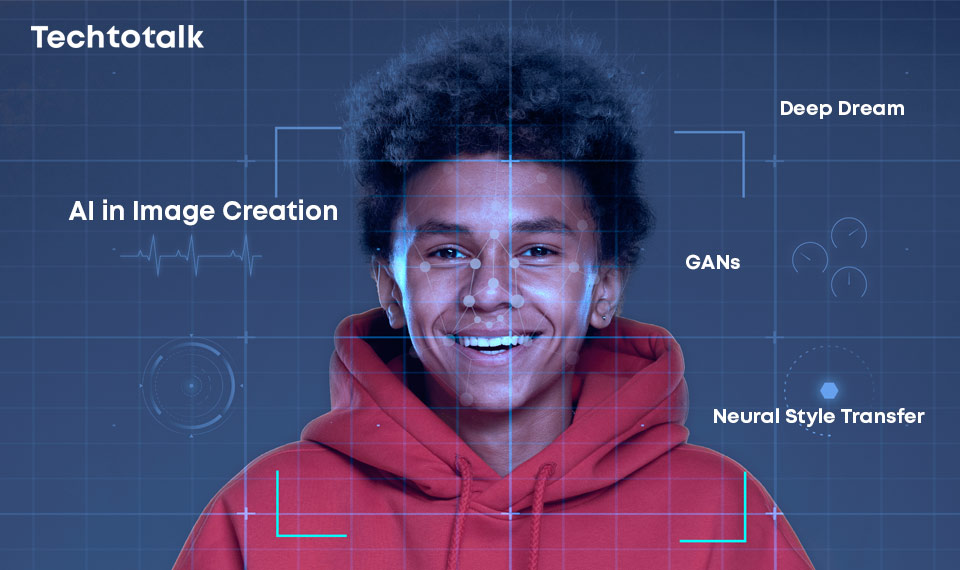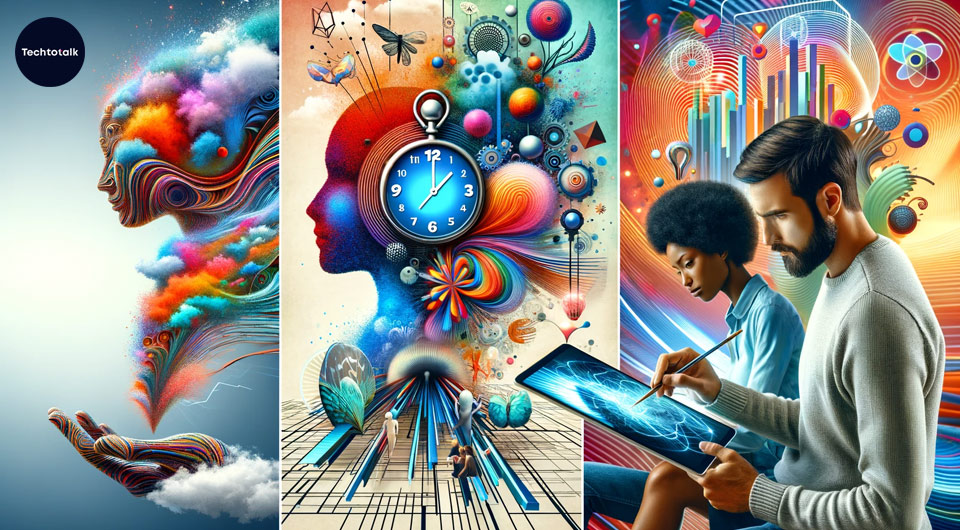When we think of artists, we might imagine someone with a paintbrush or a camera. But today, computers, with a little help from AI, are joining the ranks, creating masterpieces that can both awe and inspire. From the dreamy landscapes of Deep Dream to the imaginary faces crafted by GANs, AI is redefining the boundaries of creativity. Ready to dive in and discover how? Let’s go!
Table of Contents:
- Introduction to AI in Art: When computers become artists.
- GANs Explained: Crafting images from scratch.
- Neural Style Transfer: Mixing your photos with iconic art styles.
- Deep Dream: Dive into a computer's dreamlike imagination.
- Real-world Applications: Where you might have already seen AI art.
- Behind the Scenes: The techy bits that make the magic happen.
- Challenges & Ethics: The great, the good, and the concerns.
- What's Next?: The future of AI-driven artistic expression.
Introduction to AI in Art: When Computers Become Artists
Art, a deep expression of our feelings, has a new friend: the computer. Thanks to artificial intelligence, computers are now trying their hand at being creative.
Just like a painter uses a brush to create, AI helps computers make pictures, music, and even stories that we can connect with.
From making brand new artworks to giving a new twist to old classics, the mix of AI and art shows how tech can add to and change the way we express ourselves.
GANs Explained: Crafting Images from Scratch
In the bustling crossroads of art and technology, Generative Adversarial Networks (GANs) have emerged as a groundbreaking force. These AI marvels are not just content with adjusting or tweaking existing images; they have the capability to conjure entirely original visuals. How do they achieve this? Let's delve in.
The Magic Behind GANs:
At its core, a GAN is like a seasoned potter teamed up with an astute critic. The "potter," or the Generator, sculpts an image. The "critic," or the Discriminator, then examines this creation against real-world images it's familiar with and offers feedback.
This isn't a one-time event; it's a cycle. With each critique, the Generator refines its creation, and over time, it crafts images so realistic, it's hard for even human eyes to discern them from genuine photographs.
Key Points to Remember:
- Two-Part System: GANs operate with a Generator for creation and a Discriminator for evaluation.
- Endless Iterations: They thrive on a repetitive process of creation, evaluation, and refinement.
- Diverse Mastery: From dreamlike landscapes to lifelike portraits, their range is vast.
- Learning through Data: Their proficiency grows as they process more and more data.
- Real-World Use Cases: Beyond art, GANs find applications in sectors like entertainment, healthcare, and more.
- Challenge of Authenticity: As they advance, discerning their creations from real images becomes a captivating challenge.
In essence, GANs signify a fascinating blend of art and technology, challenging our perceptions and constantly pushing the boundaries of digital creativity.
Neural Style Transfer: Painting Your Photos with a Master's Touch
Neural Style Transfer (NST) is like giving your photos a makeover by the world's iconic artists. Ever fancied your selfie to have the swirling patterns of Van Gogh's "Starry Night" or the dreamy tones of Monet's water lilies? That's what NST makes possible.
It leverages deep learning to superimpose the style of one image (usually a renowned artwork) onto the content of another (like your photo).
Here's how it works: The algorithm dissects both the 'style' from the artwork and the 'content' from your photo. Then, it marries the two, retaining your photo's essential features but painting it with the art style you've chosen.
The result? A harmonious blend of classic artistry with modern imagery. In a sense, NST is a bridge connecting historical art epochs with today's digital age, offering a fresh, exciting canvas for creative expression.
Deep Dream: Dive into a Computer's Dreamlike Imagination
Deep Dream, birthed by Google engineers, is a mesmerizing window into what might be called a computer's 'imagination'. It's less about creating from scratch and more about transforming existing images into surreal, often kaleidoscopic, visions.
The outcome? A journey into a realm of intricate patterns, fantastical creatures, and psychedelic landscapes.
Here's a deeper dive:
Understanding the Basics:
- Origin: Developed by Google as a visualization tool to understand how neural networks perceive images.
Key Features:
- Transformation: Instead of generating new pictures, Deep Dream tweaks and morphs existing ones.
- Patterns and Shapes: Recognizes and exaggerates patterns, often resulting in dog faces, pagodas, and spirals.
How It Works:
- Layer Activation: By selectively activating certain layers of a neural network, it amplifies specific features of an image.
- Feedback Loop: The modified image is looped back, enhancing the patterns iteratively until a dreamy visual emerges.
Applications:
- Art and Music: Used to produce psychedelic album covers, music videos, and artwork.
- Understanding AI: Provides insights into how neural networks process information.
In the realm of AI and art, Deep Dream stands as a testament to the unexpected and wondrous possibilities that emerge when we let machines 'dream'. By intertwining the familiar with the fantastical, it offers a unique, kaleidoscopic perspective on everyday images.
Real-world Applications: The Ubiquity of AI Art
The blending of AI and artistry isn't just reserved for tech demos or research papers; it's entered our daily lives in surprising and delightful ways.
The next time you swipe a filter across your selfie on social media platforms or play a video game with incredibly lifelike graphics, you're witnessing AI's artistic touch.
Movie producers are leveraging AI to create realistic CGI characters and breathtaking landscapes. Advertisers employ it to design catchy graphics or to tailor content based on individual preferences.
Museums and art festivals have even showcased AI-generated paintings and sculptures, blurring the line between human and machine creativity.
Moreover, music streaming services use AI to compose background scores, sometimes indistinguishable from human-composed melodies. From our smartphones to the silver screen, AI's artistic prowess is enhancing and reshaping how we consume and interact with art in the 21st century.
Behind the Scenes: The Techy Bits Fueling the Magic
When we marvel at AI artistry, we're often seeing the tip of a very deep technological iceberg. Underneath these visually stunning displays is a world teeming with algorithms, datasets, and computing power.
Neural networks, which are the backbone of most AI art tools, are designed to mimic human brain structures.
- Neural Networks: These are the AI's brain, modeled after human neural structures, that process and interpret data.
- Depth and Complexity: Many art-focused AI tools utilize deep neural networks with millions of parameters to fine-tune their outputs.
- Training Process: Using techniques like backpropagation, the AI adjusts its parameters, learning and improving its artistic prowess over multiple iterations.
- Datasets: These are massive collections of images or styles the AI trains on, learning patterns, techniques, and nuances.
- GPUs (Graphics Processing Units): Specialized hardware that offers the necessary computational power to handle intensive tasks efficiently.
- Cloud Computing: Platforms like AWS, Google Cloud, or Azure give AI the ability to scale on-demand, accessing more resources as needed.
- Algorithms: Precision-coded instructions that guide how the AI interprets data, makes decisions, and crafts outputs.
- Iteration & Feedback: Continuous cycles of creation and refinement, where the AI evaluates its work, gets feedback (either from a human or another AI), and then improves upon it.
Challenges & Ethics: The Great, the Good, and the Concerns
AI's journey into the world of art is truly exciting, but it also comes with its set of questions and worries. The amazing art pieces that AI can make sparks joy and wonder. But, this also makes us think hard about what's real and what's made by a machine.
Who really owns the art made by AI? Is it the person who made the AI, the person who used it, or the AI itself? And, as AI looks at tons of information, there's a chance it might show some wrong ideas or misunderstand different cultures.
Also, as AI gets really good at copying styles, people might worry about fake art or if AI art lessens the worth of art made by humans. Plus, it's becoming harder to tell the difference between what's made by a human and what's made by AI.
As we step into this new world, we should be both excited and careful. We should think deeply about how AI fits into the world of art and what it means for all of us.
What's Next?: The Exciting Road Ahead for AI and Art
Imagine a world where your computer can help you doodle, or maybe even suggest a tune for that song you're writing. Well, the future of AI in art looks just as friendly and full of surprises.
As technology gets smarter, we can expect even more creative tools that are easy for everyone to use. Artists might collaborate with AI to explore new styles, while beginners could get helpful hints to kick-start their creative journey.
On the fun side, think of video games or virtual worlds crafted with the help of AI, giving us experiences that are more lively and unique. We might also see online platforms where AI helps customize stories, music, or art just for you! While it's hard to predict every twist and turn, one thing is clear: the blend of AI and art promises a colorful and exciting future for all of us.
Conclusion
As we peek into the future, the blend of AI and art feels like opening a box full of colorful crayons, each offering a new shade of possibility. With computers becoming more like creative pals, we're all set for a journey filled with fun, surprises, and a splash of imagination.
Whether you're an artist, a curious learner, or just someone who loves a good tune or picture, there's something in this mix for everyone. Let's embrace this exciting era and see where this partnership of tech and creativity takes us!





